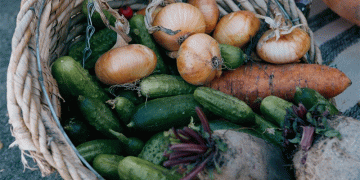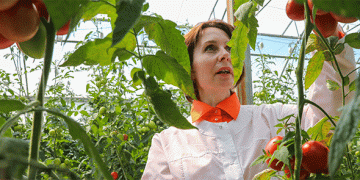Reclaiming Salt-Affected Lands for Agriculture
The coastal lands of Đông Hồi, Quỳnh Lập, Nghệ An, were once considered unfit for farming. The sandy, saline soils posed challenges for most crops, leaving much of the area abandoned. However, a group of pioneering farmers decided to bring life back to this land, inspired by the potential to grow high-value crops like carrots.
Mai Thanh Chương, a local farmer, recalls how he and others started by experimenting with summer melons and winter carrots. “We wanted to make the most of this ‘dead land,’” he shared, emphasizing their decision to adopt crops that thrive in challenging environments.
A Closer Look at the Carrot Cultivation Model
Farmers in Quỳnh Lập chose Japanese carrot varieties known for their distinct advantages:
- Adaptability: These carrots perform well in sandy soils and require less water.
- Quality: They produce short, thick roots with a sweet flavor and vibrant color, highly attractive to buyers.
Carrot planting is organized into three annual cycles:
- Early Crop: Sown in July-October, harvested from November.
- Main Crop: Planted October-December, harvested around Lunar New Year.
- Late Crop: Sown in December-January, harvested until May.
For this year’s early crop, farmers planted 7 hectares in late July. Thanks to the sandy soil’s excellent drainage, the crop was unaffected by recent floods that devastated other carrot-producing regions in northern Vietnam.
Success Built on Sustainable Practices
Key to their success is meticulous soil preparation and sustainable farming techniques:
- Organic Fertilization: Farmers rely on composted manure and organic fertilizers to improve soil health.
- Integrated Pest Management: Regular monitoring for pests like cutworms, aphids, and fungal diseases helps minimize chemical pesticide use, ensuring environmentally friendly practices.
- Efficient Irrigation: Automatic irrigation systems reduce water wastage and labor costs.
These measures have helped farmers achieve early-crop yields of 1.5-2 tons per 500 square meters (sào). The early harvest fetches higher market prices, with carrots selling at 13,000 VND per kilogram, providing a significant income boost.
Market Demand and Economic Impact
Floods in northern Vietnam have led to widespread carrot crop failures, creating a shortage in the market. This scarcity has benefited Quỳnh Lập farmers, whose early carrots are in high demand. Traders arrive directly at farms to purchase produce, ensuring a steady income stream for growers. With over 200 tons expected from this early harvest, the financial returns are projected to be substantial.
Scaling Success
The Quỳnh Lập model offers a blueprint for other regions with similar conditions. Nghệ An’s Hoàng Mai district plans to expand carrot cultivation to over 110 hectares this winter, focusing on early planting in areas with higher elevation and better drainage.
The success story of Quỳnh Lập farmers highlights the potential of innovative farming techniques to transform marginalized lands into productive assets. By embracing sustainable practices and selecting suitable crop varieties, they have achieved economic resilience and contributed to food security. Their journey serves as an inspiration for farmers across Vietnam and beyond.
































